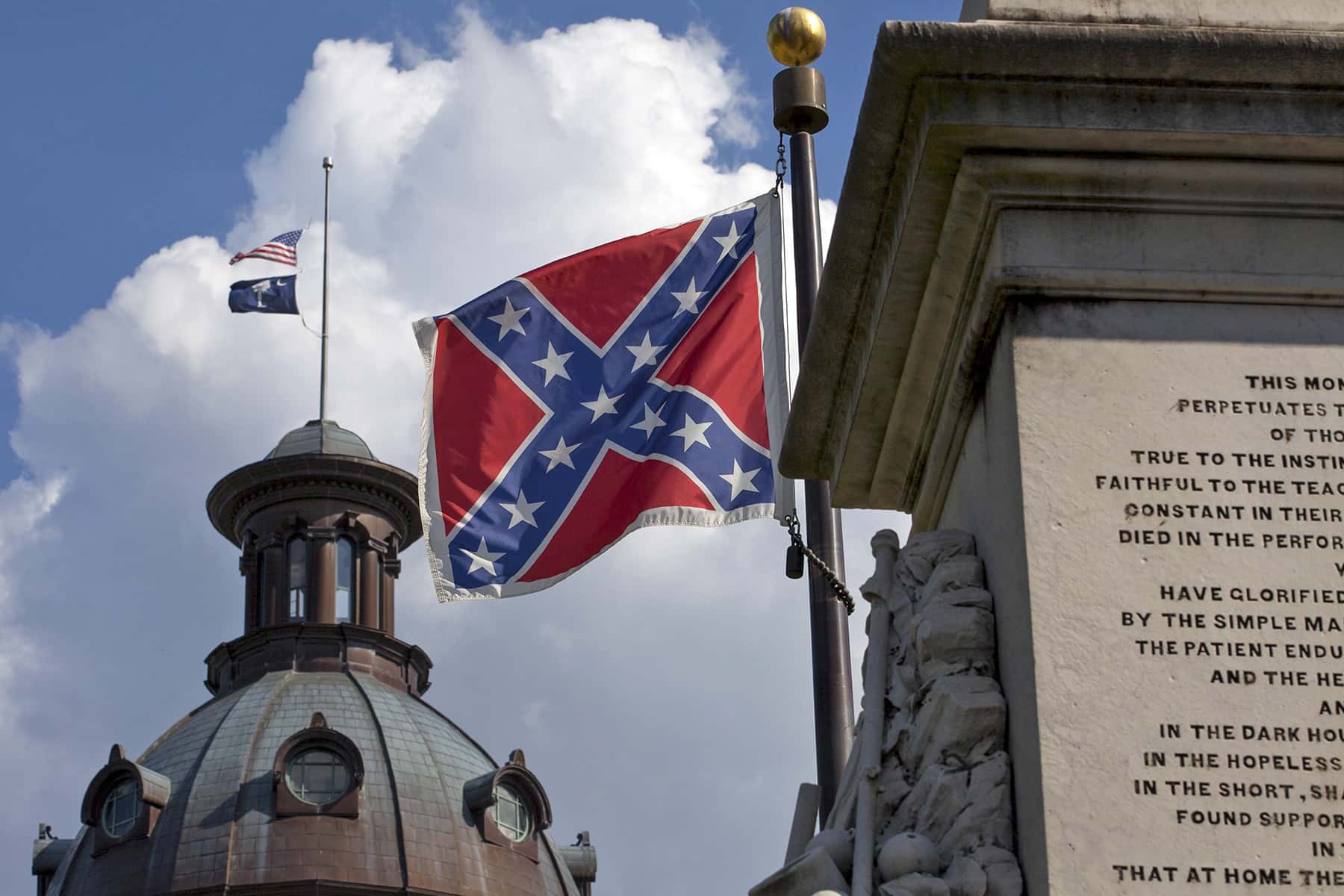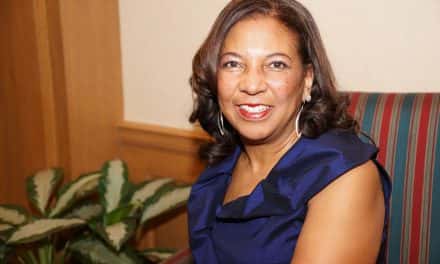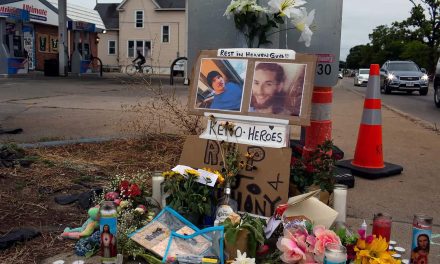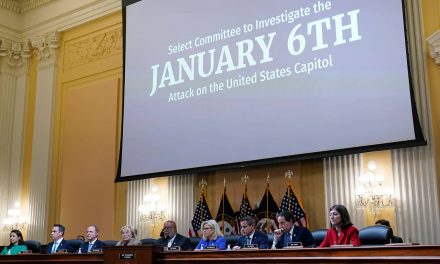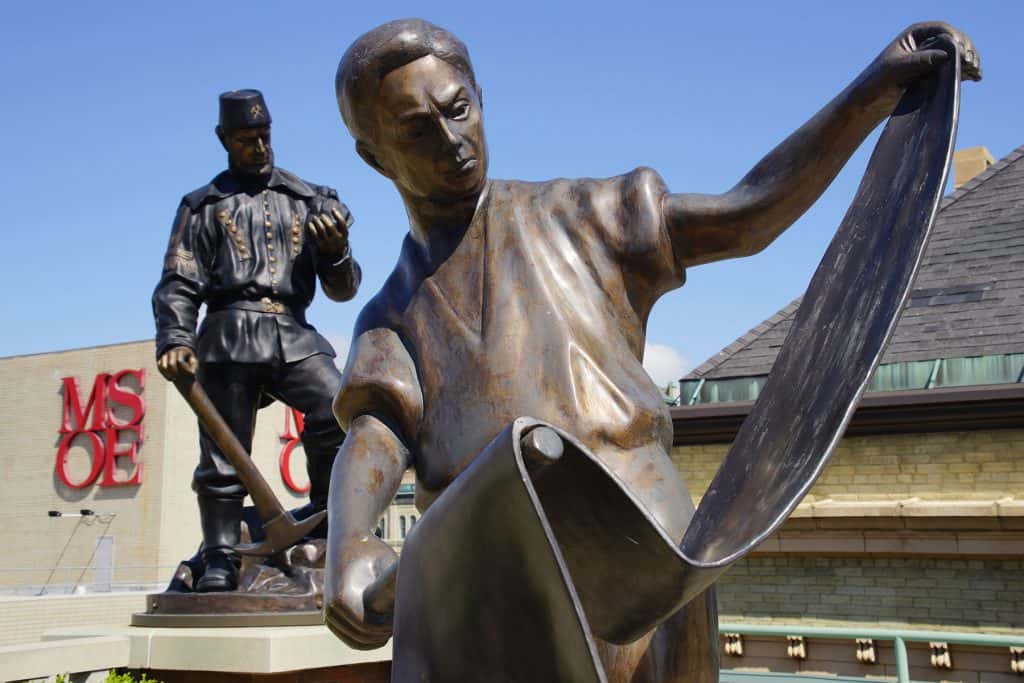
“Just because people don’t understand and don’t want to listen to the facts, they just see it as a fake and as a hoax.”
“It’s a straight up noose. The FBI has stated it was a noose over and over again. NASCAR’s leadership has stated it was a noose. I can confirm that I actually got evidence of what was hanging in my garage, over my car… that it was a noose. Never seen anything like it. Whether tied in 2019 or whatever, it was a noose. So, it wasn’t directed at me but somebody tied a noose. That’s what I’m saying.” – Bubba Wallace, NASCAR Driver
“They want to tear this country apart. They want to enrage Black people and they want to make white people feel guilty and not like America.” – Glenn Grothman, Wisconsin House Member speaking about police reform protestors
The problem with the people trolling Bubba Wallace is that they are missing the point about when the noose was placed in that garage in Talladega Speedway. The FBI investigation discovered images proving the noose had been there since at least last year. Many claimed that the noose was part of a “garage pull.” It was a noose used as a garage pull not a garage pull fashioned as a noose. There is a difference. NASCAR checked 1,684 garage stalls across the country at its tracks and found just one that had a noose, the No. 43 garage that Wallace was assigned to at the race.
I heard some claim that because it was not directed specifically at Wallace and not deemed a hate crime by the FBI that it’s proof that this investigation was an overreaction. I’m flabbergasted.
A number of years ago I travelled to my family reunion in Memphis, Tennessee about seventy miles north of my Mississippi hometown. I had acquired a map of the place where my family was enslaved in Mississippi and planned to visit the area with two cousins. We went to the land, which is now part of a state forest, and walked around for about an hour wondering what our ancestors must have endured for all of those years in that place. I took some soil from the ground and placed it in a plastic bag. We left the land and stopped at a truck stop just off the highway on our way back to my hometown. We were in Yalobusha, County near the town of Tillatoba.
As we approached the truck stop Confederate flags were everywhere, on many vehicles in the parking lot, hung on the flagpole outside the truck stop, in the windows of the truck stop and sold inside of the truck stop. It was kind of scary to be honest with you.
When you’re in the belly of the beast, less than one hundred miles from where Emmett Till was brutally murdered, less than fifty miles from the scene of racist violence at Ole Miss when James Meredith registered at the school in 1963, then you get a strong sense of the permanence of racism in Mississippi. We were just a short drive north of Grenada Damn where one of the cousins I was with that day had driven into the midst of a huge KKK rally just a few years prior to our family reunion.
If the Confederate flags were not enough, as I walked into the bathroom I immediately saw in bold black letters written across a condom machine hanging from the wall “not for niggers use.” I told my cousins and we quickly exited the truck stop without purchasing a thing. I could not wait to get back on the highway and get as far away from that place as possible.
The Confederate battle flag which flew for less than four years over Confederate troops has come to symbolize the worst of America’s long legacy of racism and nooses are the symbol of thousands of lynchings of black men, women and children across the country, not just in the South.
In recent years I have traveled the backroads of Wisconsin traveling to Wausau, Platteville, Burlington, Eau Claire, LaCrosse, Menominee and many other places far away from my Milwaukee home. As a child I never saw much of Wisconsin outside of Milwaukee other than going to motorcycle races near Union Grove and going on a field trip to the Kettle Moraine State forest while in fifth grade. The state was a complete mystery to me just as it was for many of my friends whose only other travel around the state was to go to certain “fishing holes” with their families.
Wisconsin did not come across as a really friendly place to black people from what I remember. A former co-worker told me a story of traveling with a basketball team he played on. They were on the road driving from a game near Black River Falls when they pulled into a restaurant parking lot to get a bite to eat. All of the players were black and all of the patrons and workers in the restaurant were white. He says they received the old “what are you doing in this neck of the woods” look when they walked into the restaurant. It didn’t bother them that much because they had seen it before in other small Wisconsin towns. What happened next was different.
As they waited to be served, one of the waiters refused to come to their table. They complained to the manager on duty. He went over to the waiter and told him that he must serve these men just like every other customer. He refused, and repeated over and over many times “but they’re just niggers.” This upset many of the players but they were smart enough to know where they were and just left the restaurant. Let me remind you, this was not Mississippi, circa 1960 this was Wisconsin circa 1995.
As I sometimes drive to speaking engagements in the thirty-five different towns I have done work in around the state, I have seen Confederate flags occasionally. I’ve seen them flown from cars, on flagpoles in residential areas, on semi-trucks, and painted on barns. They remind me why I sometimes call this state “Wississippi.”
The love affair with all things Confederate seems very odd to me in a way. Never in history has the losing side celebrated in the way lovers of the Confederacy have. I doubt the British celebrated losing what we call the American Revolution. The French do not celebrate their ugly loss in the battle of Dien Bien Phu in 1954 which forced them to exit their colonial venture in Southeast Asia. But somehow the love affair with the Confederacy lives on.
The Confederate States of America were founded on the principle of protecting the right to enslave black people. They were not hypocrites. They said what the meant and meant what they said. In their constitution modeled after the U.S. Constitution, the Confederates used the words slave and slavery. The U.S. Constitution purposely avoided these words. As I‘ve written about many times before, the “myth of the lost cause” is the story of the Confederacy written years after the war ended. Mississippi said in their letter of secession “the institution of slavery– the greatest material interest of the world” was the cause of the bloodiest war in American history.
“No slave or other person held to service or labor in any State or Territory of the Confederate States, under the laws thereof, escaping or lawfully carried into another, shall, in consequence of any law or regulation therein, be discharged from such service or labor; but shall be delivered up on claim of the party to whom such slave belongs, or to whom such service or labor may be due.” – Confederate States of America Constitution
“No Person held to Service or Labour in one State, under the Laws thereof, escaping into another, shall, in Consequence of any Law or Regulation therein, be discharged from such Service or Labour, but shall be delivered up on Claim of the Party to whom such Service or Labour may be due.” – United States of America Constitution
There is no honest appraisal of the Confederacy that does not acknowledge the legacy of racism. By celebrating the Confederate flag, you are plainly and simply celebrating racism. You are celebrating white people who depended on building the wealth of this nation off the backs of tens of millions of Africans. Don’t call them African Americans—because America said in no uncertain terms—that they were not Americans.
“The question is simply this: Can a negro, whose ancestors were imported into this country, and sold as slaves, become a member of the political community formed and brought into existence by the Constitution of the United States, and as such become entitled to all the rights, and privileges, and immunities, guarantied by that instrument to the citizen?..They had for more than a century before been regarded as beings of an inferior order, and altogether unfit to associate with the white race, either in social or political relations; and so far inferior, that they had no rights which the white man was bound to respect; and that the negro might justly and lawfully be reduced to slavery for his benefit.” – U.S. Supreme Court Decision in Dred Scott v. Sandford case of 1857
The symbol carried by the Ku Klux Klan during their third iteration in the 1950s and 60s was not the Confederate flag. It was the American flag. Just look up images of the KKK in the 1920s through 1960s and you will see very few Confederate flags but hundreds of American flags. The use of Confederate flags as a symbol of hate is more of a recent occurrence. It became really popular in the 1970s and 80s. People around the country, particularly outside the South, let us know that the backlash against the Civil Rights Movement was an American pushback not just a Southern pushback. Friends of segregation came from all sectors of America.
Here in Wisconsin we did not necessarily have Jim Crow signs, but Jim Crow was alive and well in this state. Historian James Loewen wrote a book about segregation called Sundown Towns: A Hidden Dimension of American Racism.
“From Maine to California, thousands of communities kept out African Americans (or sometimes Chinese Americans, Jewish Americans, etc.) by force, law, or custom. These communities are sometimes called “sundown towns” because some of them posted signs at their city limits reading, typically, “Nigger, Don’t Let The Sun Go Down On You In ___.” Some towns are still all white on purpose. Their chilling stories have been joined more recently by the many elite (and some not so elite) suburbs like Grosse Pointe, MI, or Edina, MN, that have excluded nonwhites by “kinder gentler means.” When I began this research, I expected to find about 10 sundown towns in Illinois (my home state) and perhaps 50 across the country. Instead, I have found about 507 in Illinois and thousands across the United States. This is their story; it is the first book ever written on the topic.”
According to Loewen, dozens of these sundown towns were reportedly in Wisconsin. White people did not want blacks living in their towns. They were fine with blacks working as domestics in their homes but did not allow those blacks to live anywhere near them or to even stay in those towns beyond their working hours. That is part of the legacy of Wisconsin, the second most segregated state in the country.
Unknown to many in this state, Confederate Rest an area in Forest Hill Cemetery, in Madison, is the northernmost Confederate graveyard in the nation and 140 Confederate prisoners of war are interred in graves there. The large, stone monument placed there in 1906 listing the names of the Confederate soldiers was removed from the cemetery in January 2019. Two years prior to this another stone marker with a plaque which described the buried as “valiant Confederate soldiers” and “unsung heroes” was removed.
According to the Milwaukee Journal Sentinel, “the first recorded draft riots — in opposition to President Abraham Lincoln’s call for (black) soldiers to join the Union — occurred in Port Washington”… and Confederate President Jefferson Davis “has a monument at Fort Crawford Military Cemetery in Prairie du Chien.”
One of the ugliest symbols of American racism is the lyncher’s noose. Walter White led the NAACP for 36 years after joining the organization as an investigator of lynchings in 1918. He was in physical appearance a white man, but was black and able to sneak into white spaces to investigate lynchings. He talked about his dual identity — white on the outside but black on the inside — in his 1948 autobiography, A Man Called White.
“I am a Negro. My skin is white, my eyes are blue, my hair is blond. The traits of my race are nowhere visible upon me…I am not white. There is nothing within my mind and heart which tempts me to think I am. Yet I realize acutely that the only characteristic which matters to either the white or colored race — the appearance of whiteness— is mine. There is magic in a white skin; there is tragedy, loneliness, exile in a black skin.”
Sociologist James Cutler observed, “it has been said that our country’s crime is lynching.” Mark Twain renamed the country the “United States of Lyncherdom” according to historian W. Fitzhugh Brundage in his book Lynching in the New South: Georgia and Virginia, 1880-1930. Brundage examined almost six hundred lynchings in those two states wondering out loud why Georgia had so many lynchings and Virginia had the fewest number in the South. He found that the nearly five hundred lynchings in Georgia was based on the concept of “white dominance” so prevalent in that state.
This point is central to an understanding of American lynching and the symbolic nature of nooses. Lynchings were not just about accusations of crime committed by blacks as many assume. It had more to do with whites wanting to have total control over black lives and using massive doses of violence to enforce this principle. Lynchings were so much a part of the white psyche that mobs from, Omaha, Nebraska, Duluth, Minnesota, Okemah, Oklahoma and Marion, Indiana joined with their southern compatriots in the ritualized killing of black people.
“I could not suppress the thought that this earth had acquired its color from the blood that had dripped down from these trees.” James Baldwin discussing the red clay hills of Georgia.
Phillip Dray in his book At The Hands of Persons Unknown: The Lynching of Black America, tells us that “Throughout America, not just in the South, blacks accused of a crime — or merely of violating social or racial customs — were hunted by mobs, abducted from jails and given summary ‘justice’ in blatant defiance of all guarantees of due process under law. Men and women were were shot, hanged, tortured, and burned, in often sadistic, picnic-like ‘spectacle lynchings’ involving thousands of witnesses. ‘At the hands of persons unknown’ was the official verdict rendered on most of these atrocities.”
The lynch rope has become the lasting symbol of decades of open lynchings of black people. Nooses are on display in the homes, and workplaces of many whites across the country today. The noose found in Bubba Wallace’s garage at Talladega was there for months with no one saying or thinking it was problematic. So when I hear people say it was blown out of proportion just because the FBI ruled it was not a hate crime I’m incensed. The person who placed it in that space and the untold numbers of people who saw it over those months and never once thought it was wrong are the bigger issues in Talladega, with NASCAR and with America in general when it comes to that symbol.
We could never imagine swastikas being displayed so openly in Germany or the United States because of their attachment to the ugly history of the Holocaust. Illegally displaying Nazi symbols in Germany can be punished by three years in jail. Hitler’s face is not even allowed to be displayed in video games in the country. Displaying swastikas and SS sig rune publicly or selling goods that sport them is illegal across the nation. The Nazi salute and statements such as “Heil Hitler” are also banned in public in Germany. These are considered “symbols of anti-constitutional organizations.”
Yet here in the United States, Confederate memorabilia and nooses, symbols of the “traitors” who caused the Civil War and murdering white mobs are openly displayed. NASCAR has banned Confederate flags in all of its events but thousands were on display as fans arrived at the race in Talladega, Alabama. Back on November 3, 1907 John Quigleton was lynched in Talladega. Our Time Press has a list of the names of all the black people whose lynchings were documented in Alabama by Ralph Ginzburg in his 1962 book 100 Years of Lynching.
“What lies at the root of race hatred? After spending several years with the subject, I hold with psychologists that it is unconscious guilt feelings on the part of the race-hater. The person who hates Negroes usually hates other people beside Negroes. He’s almost a professional hater.” – Ralph Ginzburg
The guilt that Glenn Grothman complained about is on display in the ignorance of his statement. As white violence against blacks by police has been exposed as never before, a lot of white people are feeling guilt. The guilt is not being forced on them. As they wake up to the reality of the lived experiences of black people — particularly the ugly things whites have and continue do to us — feelings of guilt are a natural reaction for many. No one needs to guilt white people; they are feeling personally responsible for these reprehensible acts throughout American history.
We’re simply telling the unvarnished truth that far too many whites have been hiding from. Symbols of hate like the Confederate flag and nooses are a part of that unflattering history that the world is shining a light on in Black Lives Matter protests. It’s time to retire these symbols for good.
“No one is born hating another person because of the color of his skin, or his background, or his religion. People must learn to hate, and if they can learn to hate, they can be taught to love, for love comes more naturally to the human heart than its opposite.” – Nelson Mandela, Long Walk to Freedom
© Photo
Jаsоn Mіczеk and NАSCАR

